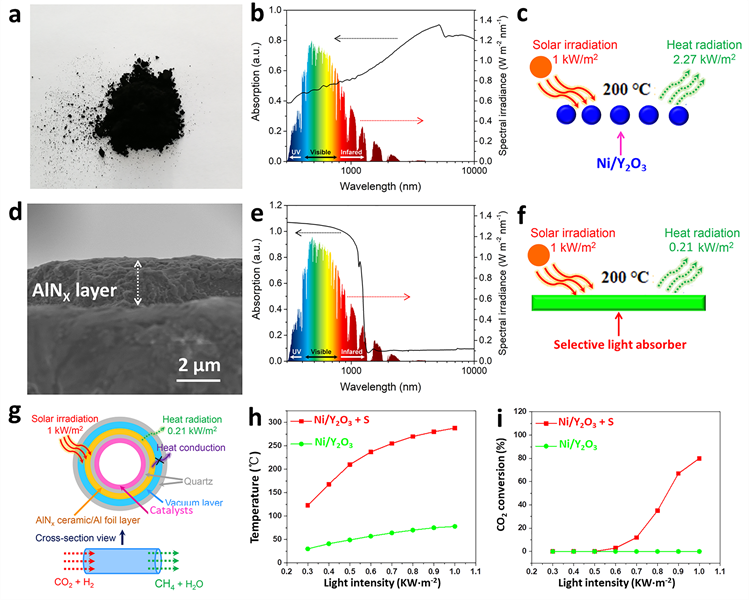Dr. Li Yaguang Makes Important Progress in Photothermal Catalysis
Recently, Dr. Li Yaguang from the Research Institute of Low-Dimensional Energy Conversion Materials and Devices of the School of Physics and his researchers cooperate with Zhejiang Normal University, the National Institute for Materials Science (NIMS) and other departments, having made important progress in the field of photothermal catalysis. The main result Selective light absorber-assisted single nickel atom catalysts for ambient sunlight-driven CO2 methanation has been published in the international authoritative journal Nature Communications (2019, 10, 2359) with Hebei University as the first department and Dr. Li Yaguang as the first and corresponding author of the paper.
The sunlight-driven CO2 methanation is important for addressing the growing energy crisis and environmental issues. At present, the research of this direction focuses on the preparation of light strong-absorbing materials to enhance light trapping ability and generate high-enough temperature to promote catalysis. However, these light absorbing materials can only obtain temperatures of 90 °C under standard sunlight, which cannot promote the photothermal CO2 methanation. Dr. Li Yaguang and others believe that the key to obtaining high temperature of light-absorbing materials under low-light irradiation is to reduce heat dissipation. At the same time, they found that thermal radiation is the main way of heat dissipation of light-absorbing materials.
During the process of this project, they proposed to use a selective light absorbing material to absorb sunlight, which can absorb 95% of the sunlight and the heat radiation is only 1/10 of the reported light absorbing material. What’s more, selective light absorbing material can produce 288 °C under standard sunlight and the temperature is more than three times of traditional light absorbing materials, which can realize the photothermal catalysis of CO2 methanation driven by standard sunlight. In addition, they prepare an amorphous Y2O3 two-dimensional nanosheet-loaded monoatomic nickel structure as a highly efficient methanation catalyst. The high-efficiency CO2 methanation of outdoor sunlight (0.52 to 0.7 standard sunlight intensity) is achieved by the synergistic action of selective light-absorbing material photothermal system and amorphous Y2O3 two-dimensional nanosheet-loaded monoatomic nickel. The efficiency is 80% and the methane yield is 7.5 l m−2h−1.
The Research Institute of Low-Dimensional Energy Conversion Materials and Devices of the School of Physics is mainly engaged in the study of theoretical design, controllable preparation and performance regulation of low-dimensional optical-thermal-electric energy conversion materials and devices. In the past three years, a series of research progresses have been made in related fields. The results have been published in Nat. Commun. (IF=12.353), Adv. Mater. Funct. (IF=13.325), Adv. Science (IF=12.441), Nano Energy. (IF=13.12), Appl. Cata. B-Environ. (IF = 11.698), Phys. Rev. B, Appl. Phys. Lett. and many other famous journals. This project has received strong support from the National Natural Science Foundation of China (51702078, 21633004), Hebei Excellent Youth Fund (A2016201176), Hebei University Outstanding Doctoral Program (YB201502) and Shanghai Synchrotron Radiation Source (BL14W1 Line Station).

Reported by the School of Physics, Department of Science and Technology